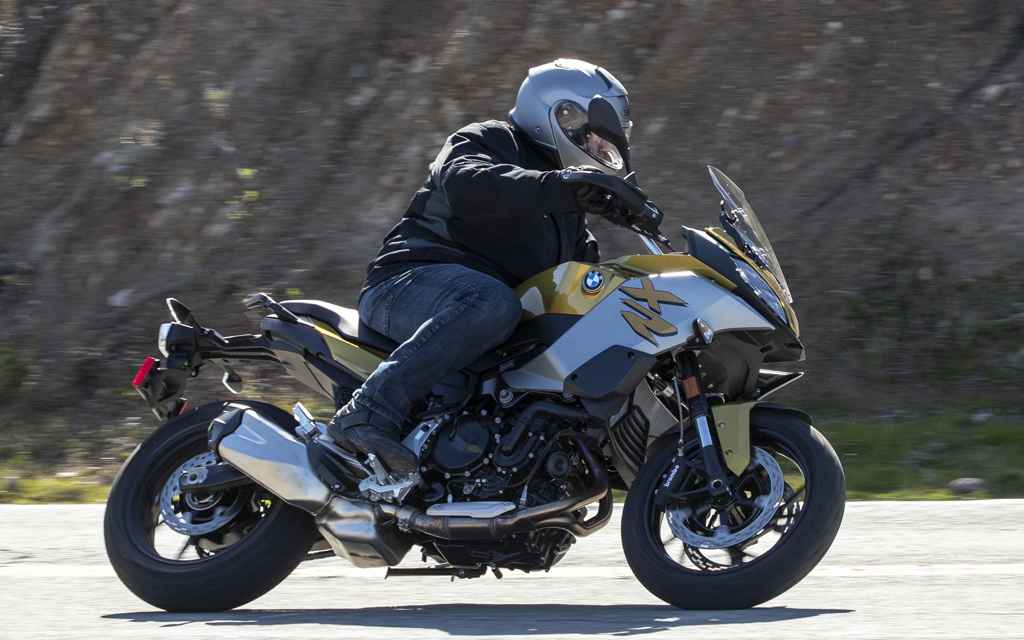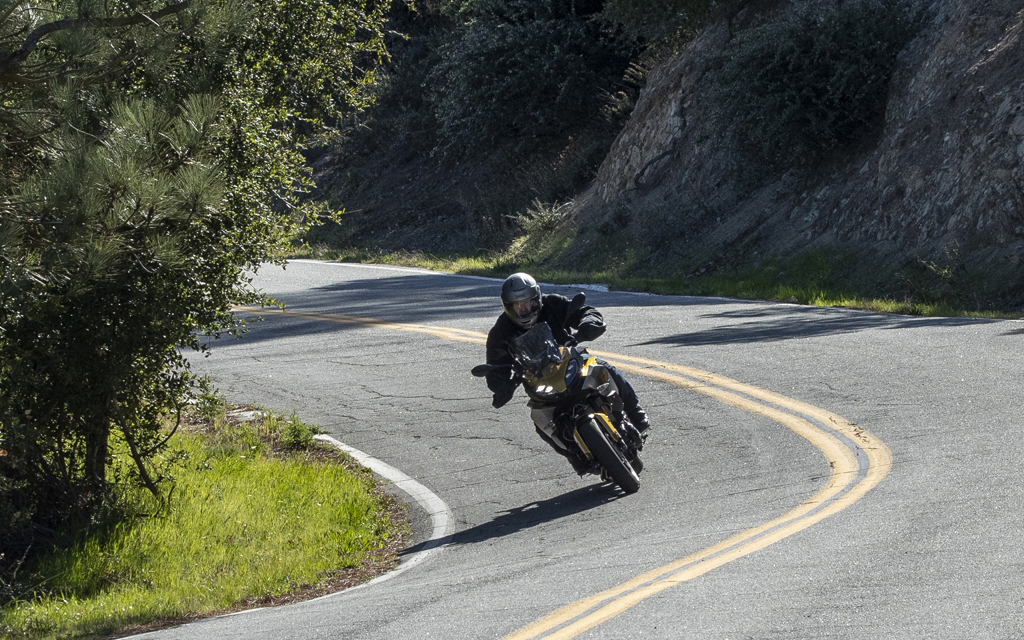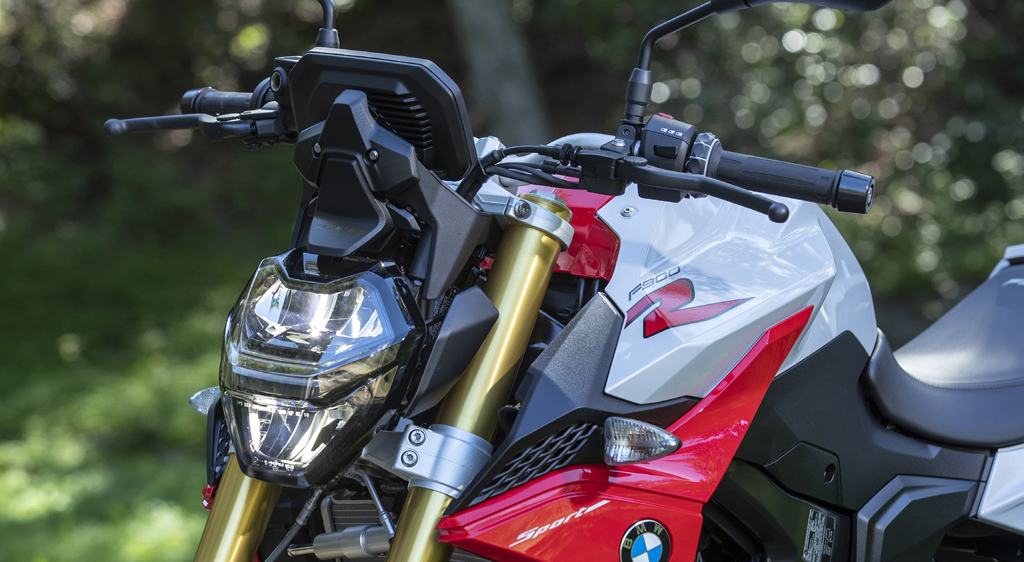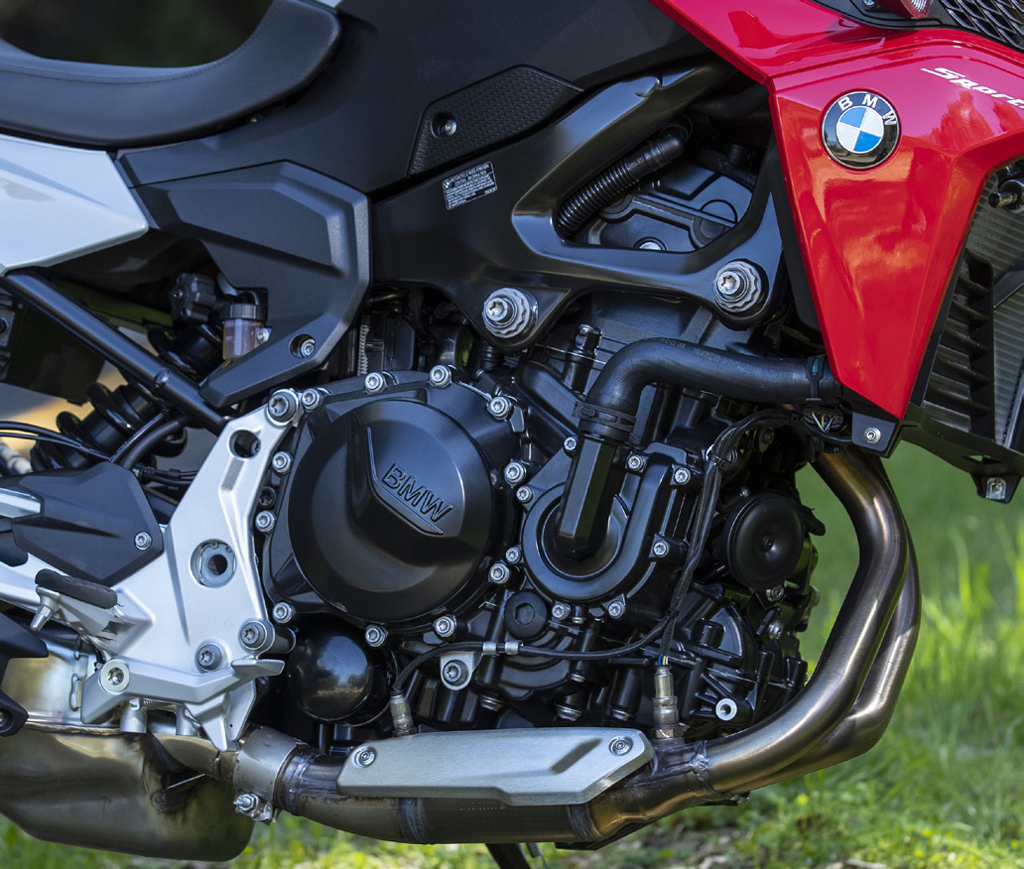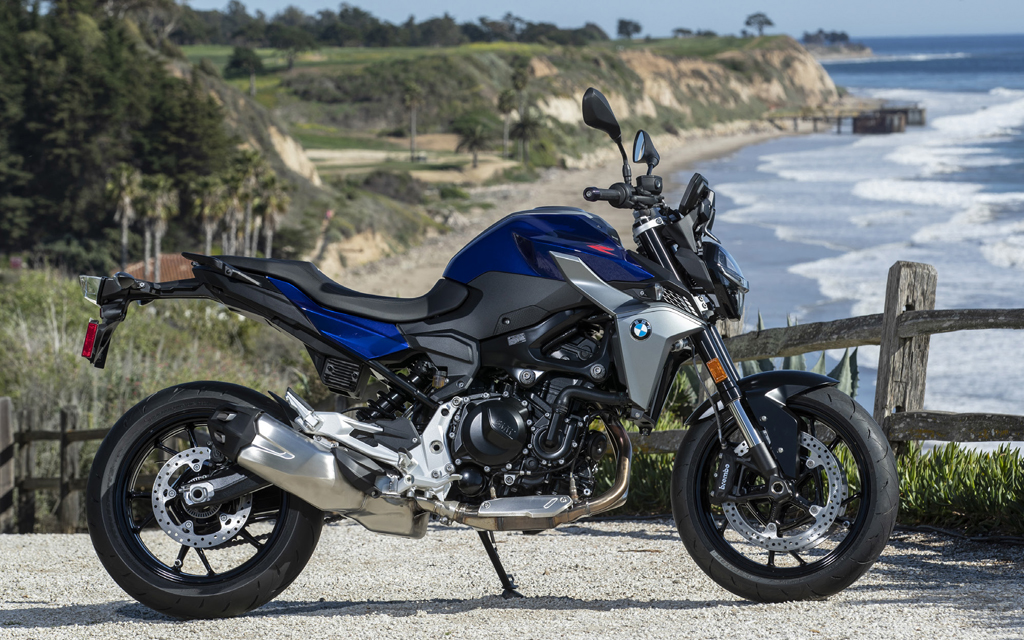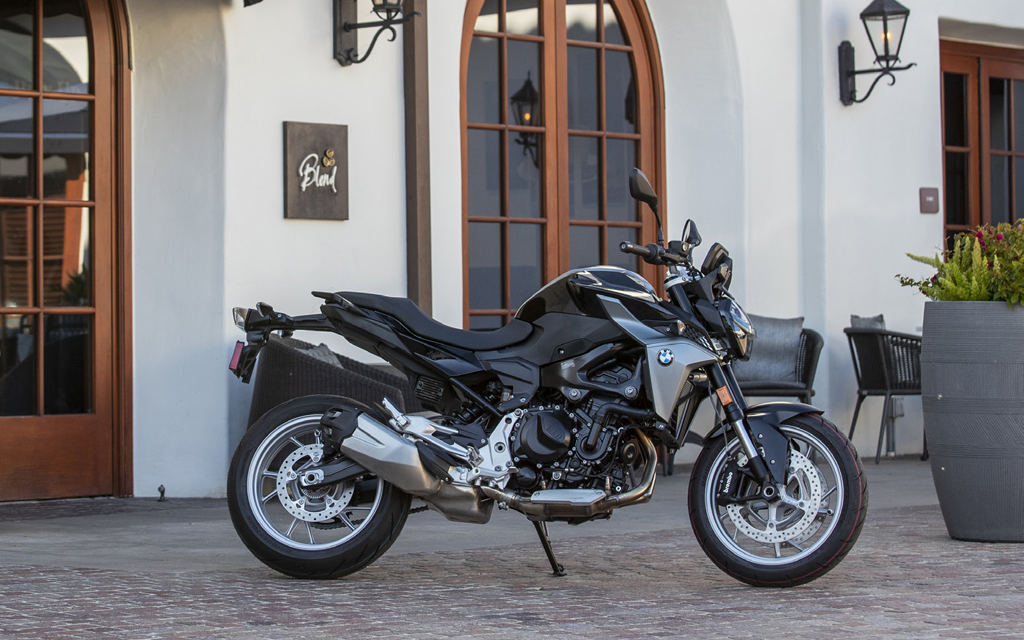Photos: Kevin Wing, BMW
DUAL PERSONALITIES
Midsize Beemers are distinctly different
California. Life was still normal when BMW presented the 2020 F900XR and F900R to the North American press at the fancy Santa Barbara Ritz. It was early March and nothing seemed unusual yet. Everyone knew about the situation in China and northern Italy, but from Canada and the US, this virus seemed like a very distant problem, not a pandemic. So, flights, hotels, restaurants, press conferences and other activities all went on in a perfectly normal way. No one was suspecting it at the time, but this would be one of the last press events of the kind in the world before life as we knew it would change. Several other new model launches were scheduled in the following months all over the planet, but all were canceled and so far, there are no plans to reactivate them. Even looking further ahead, manufacturers are uncertain about these events and they are likely to remain so until science catches up and offers real remedies to the situation.
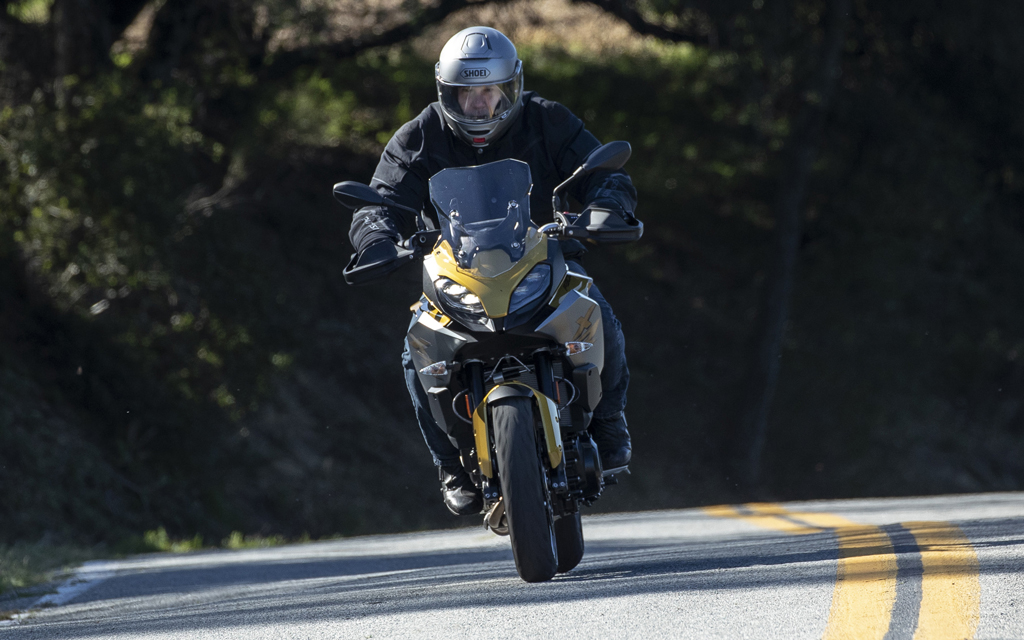
For now, though, we motorcyclists are lucky in that we’re able to keep doing what we love even during a pandemic. As long as we go about it with a reasonable minimum amount of common sense, that is. So it’s not all dark skies for us. In fact, a certain German brand would like to remind riders the sky is blue and white—as is its crest—so that, just maybe, they consider making these new for 2020 F900XR and F900R their next purchases.
The S1000XR’s new little sister, the F900XR, and the new generation of the F800R, the F900R, share the same engine/chassis combo, a platform that was introduced with the current generation of F750/850GS in 2018. The new 900s, however, offer a larger displacement than the GS pair. It’s bumped from 853 to 895 cc thanks to a 2 mm bore increase, with power going from a claimed 95 to 99 hp. From here on, the technical differences between the XR and R become as substantial as the distinctions between their looks and mission.
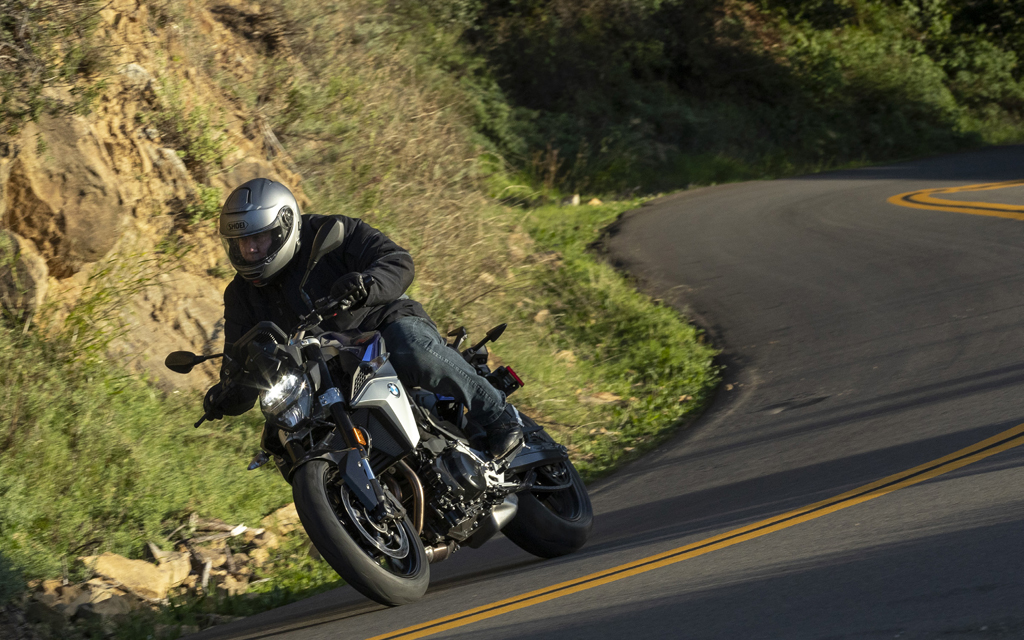
Unlike the R, which already existed in the form of the F800R, the F900XR is an entirely new model that plays the role of the entry-level version of the powerful and desirable S1000XR. BMW’s wish to emphasize the family tie couldn’t be clearer: the 900XR’s styling and colours are directly borrowed from the bigger XR. Like the 1000, the 900 is a crossover, i.e., a street bike vaguely inspired by adventure bikes, but strictly designed for road use with no concession whatsoever that would allow for even a light form of off-road riding. So, mechanically, apart from their longer travel suspensions, crossovers are pure street bikes and that’s exactly what the F900XR is and feels like, just as is the case for the 1000XR.

That being said, even if the 900 and 1000 do look alike, belong to the same category, offer similar upright ergonomics and have a displacement gap of only 104 cc, the fact is they offer two totally distinct riding experiences. The main difference is performance: there is absolutely nothing similar between their power levels. The bigger machine is a proper monster that only the most experienced riders can push to its limits in a safe and controlled way; the acceleration of the 900 is simply not in the same universe. Even if the 900 produces a very respectable claimed output just shy of 100 hp, the truth is performance isn’t exactly exciting, at least unless rpms are kept in the higher portion of the rev range. If my finely tuned bum dyno was asked to guess, it would have returned an estimate of about 85 hp.
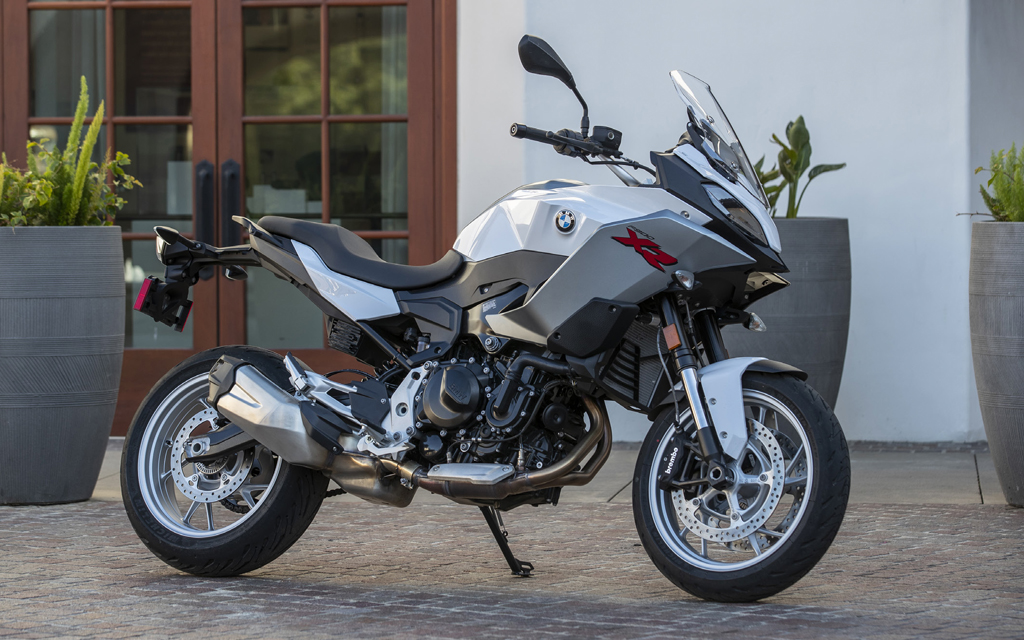
Nonetheless, the 900 twin remains an excellent engine that produces quite decent low-to-mid-range torque along with a good punch when approaching redline. It’s just that potential buyers observing that the two XRs look similar need to understand any comparison with the furious temper of the 1000 four is totally pointless. We’re really talking night and day here, since the F900XR delivers its power in such a friendly, progressive and predictable manner that it could easily take the role of a first bike for motorcyclists preferring not to begin with a 300/400, then quickly have to move on to an 800/900. As for moderately experienced riders, if they’re fine with the 900’s power, they’ll sure appreciate the model’s good balance of docility and fun. Also from the notes on engine performance: clutch and six-speed transmission work fine, but the engine vibrates substantially at high revs.
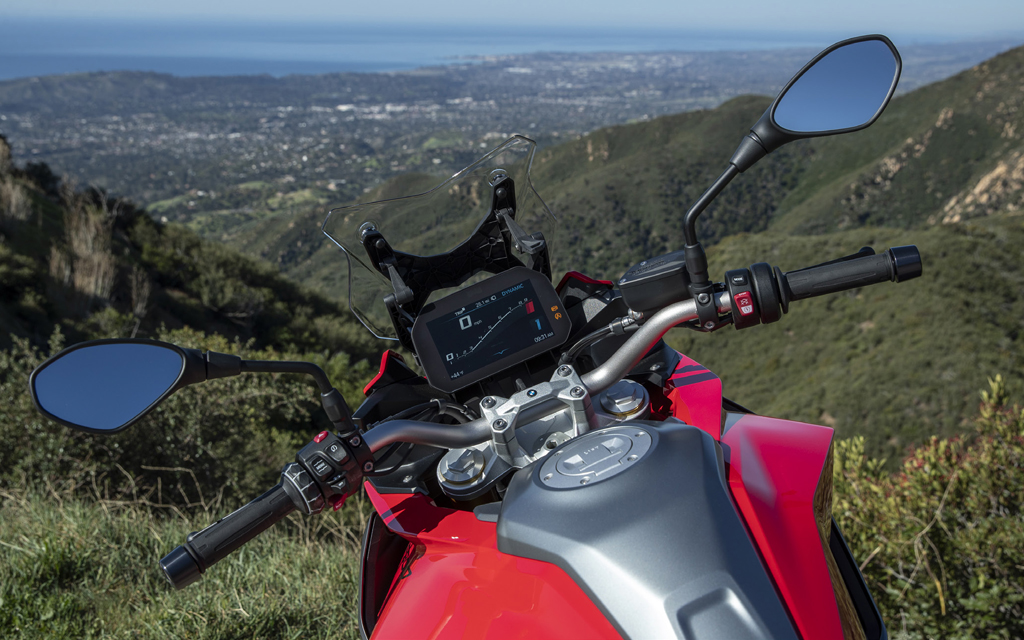
The XR’s friendliness in terms of power delivery also applies to handling, which is sporty and precise. One of the most surprising characteristics of the XR is that the rider doesn’t feel at all thag he/she is on a bike with long-travel suspension, because both the fork and rear shock are relatively firm. In choosing this type of setting, BMW gave the XR solid and precise handling even when ridden aggressively on twisty back roads, but that decision also has its drawbacks, such as a comfort level that’s no more than fair and a seat that’s high without any real benefit. Truth is, riding the XR, you realize its long-travel suspension doesn’t do more than score styling points; it’s just firm suspension set up for sport riding. Only the rear shock is adjustable, for rebound damping and preload.
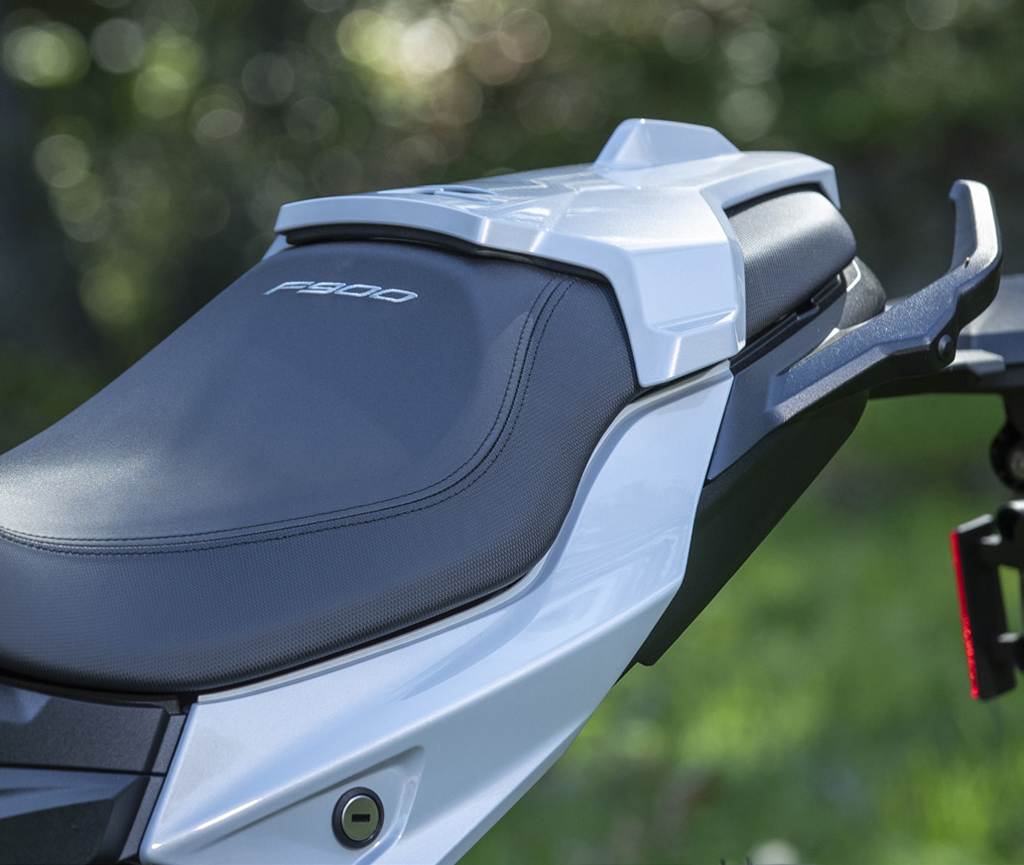
Speaking of sport riding, a few interesting features appear on the XR/R’s 6.5-inch TFT screen when the “Riding Modes Pro” option is bought. On top of offering different presentations, the screen displays deceleration force in Gs and lean angles. Both turn out to be quite fun data to keep track of, especially the lean angle numbers. BMW offers many more options from a quick shifter to adaptive cornering headlights to electronic rear-wheel lock prevention. The base models are equipped with excellent brakes with ABS and stability control, which is basic rear-wheel antiskid. The real traction control system is optional.
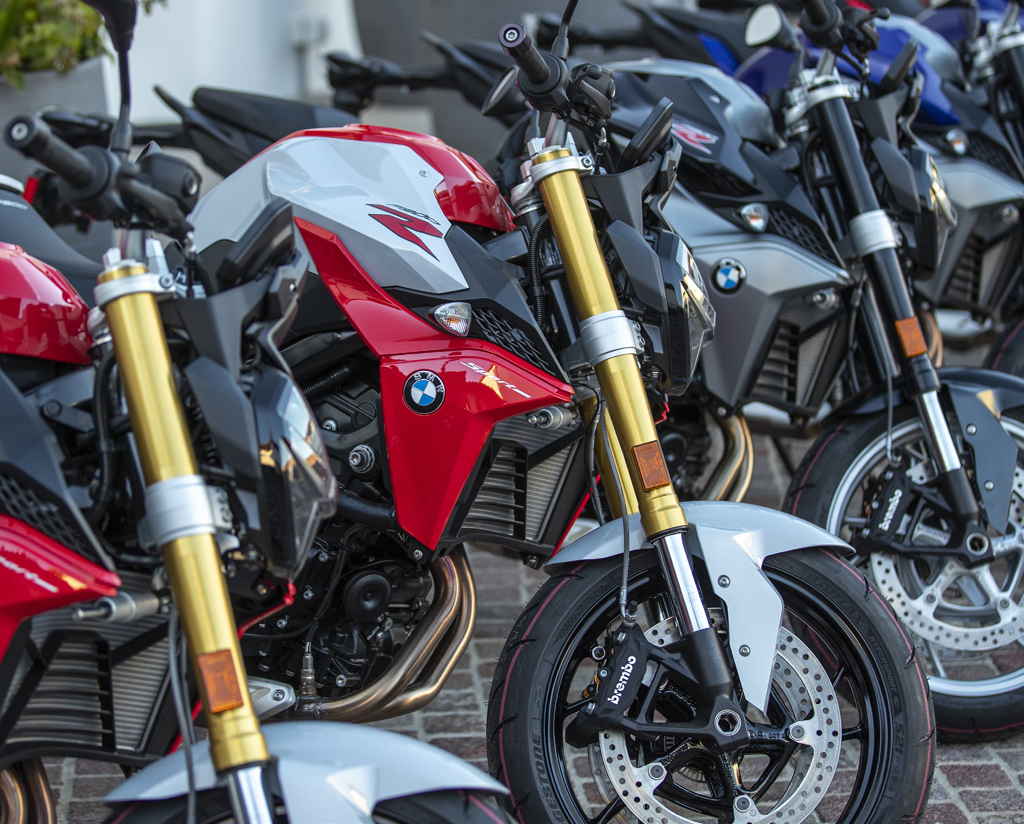
As for comfort, the F900XR gets an average rating. The upright riding position is excellent and doesn’t torture any body parts, and wind protection is pretty good; the seat, however, is on the hard side and the suspension is rather firm. BMW offers a good choice of accessories including panniers, higher windshields and “Comfort” seats that might improve various aspects of the XR, but we didn’t have the chance to test their effectiveness in the context of this press launch.
While the F900XR emulates the styling of the top of the line S1000XR, the F900R goes in a different direction with a unique and distinctive style in BMW’s model range. Its compact, muscular looks draw attention right away, and the closer you look, the more impressive the thoughtful design work becomes. The result is an aura of quality that was absent on the previous F800R.
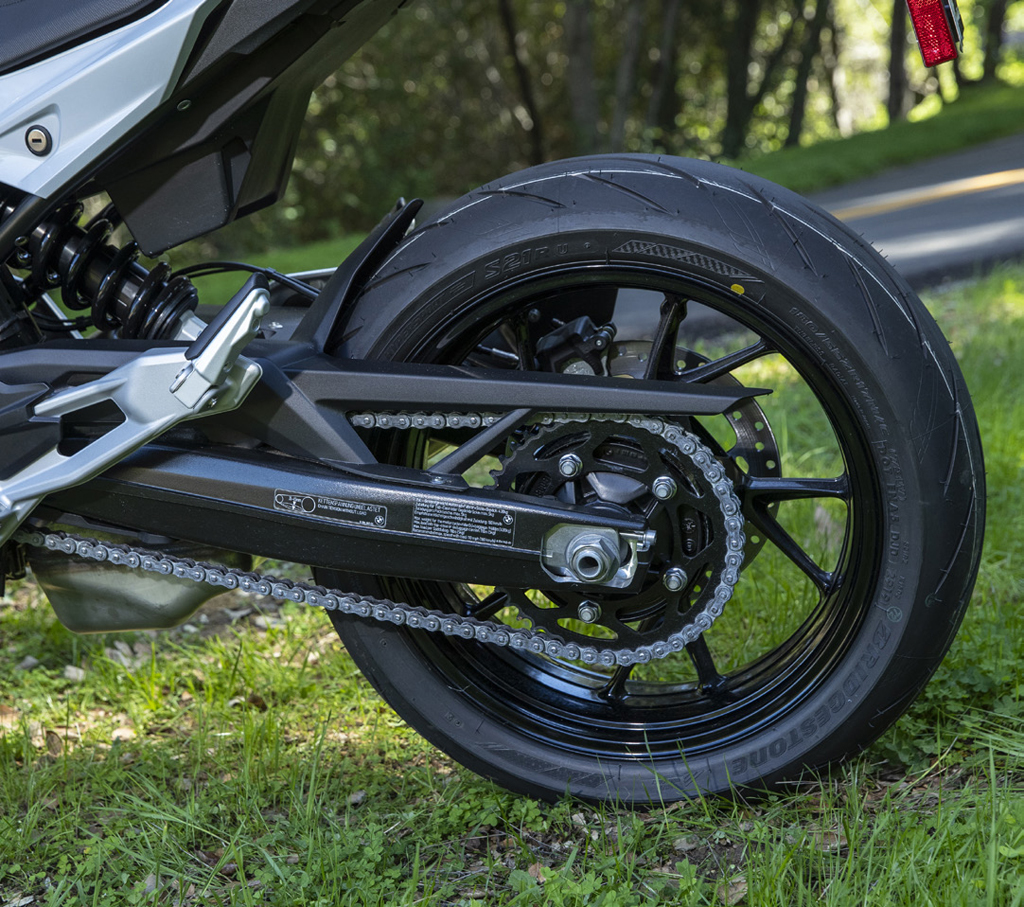
Even if a high number of its parts are identical to the XR’s, the R delivers a very different riding experience. BMW wanted to make it as low as possible, which the thin padding immediately gives away. On the road, every engine characteristic of the XR is felt on the R and most of the XR’s handling qualities are also present. From there on, though, the differences become substantial and are generally not in favour of the R, which comes as a surprise.
The previous F800R played the role of BMW’s entry-level midsize model; it was a good, light, do-it-all motorcycle with a simple user-friendly nature. The new 900 is more powerful and better equipped, but it also has some hard-to-understand characteristics, the most obvious being suspension settings that can’t be qualified as anything else than harsh. These result in a motorcycle that not only shakes and rattles its rider on imperfect pavement, but that can also occasionally show poor stability over more seriously damaged roads. We’re even talking light steering head shake here, nothing dangerous, but still something that hasn’t been heard of for a good long while on modern bikes. The R as well as the XR are both equipped with a steering damper, which would suggest BMW testers might have felt the same things. Quite frankly, it is hard to figure out why a manufacturer like BMW would voluntarily choose to calibrate suspension this way. Add the hard seat to the equation and you end up with a motorcycle with a comfort level more and more compromised as road conditions deteriorate and kilometres add up. Weird.
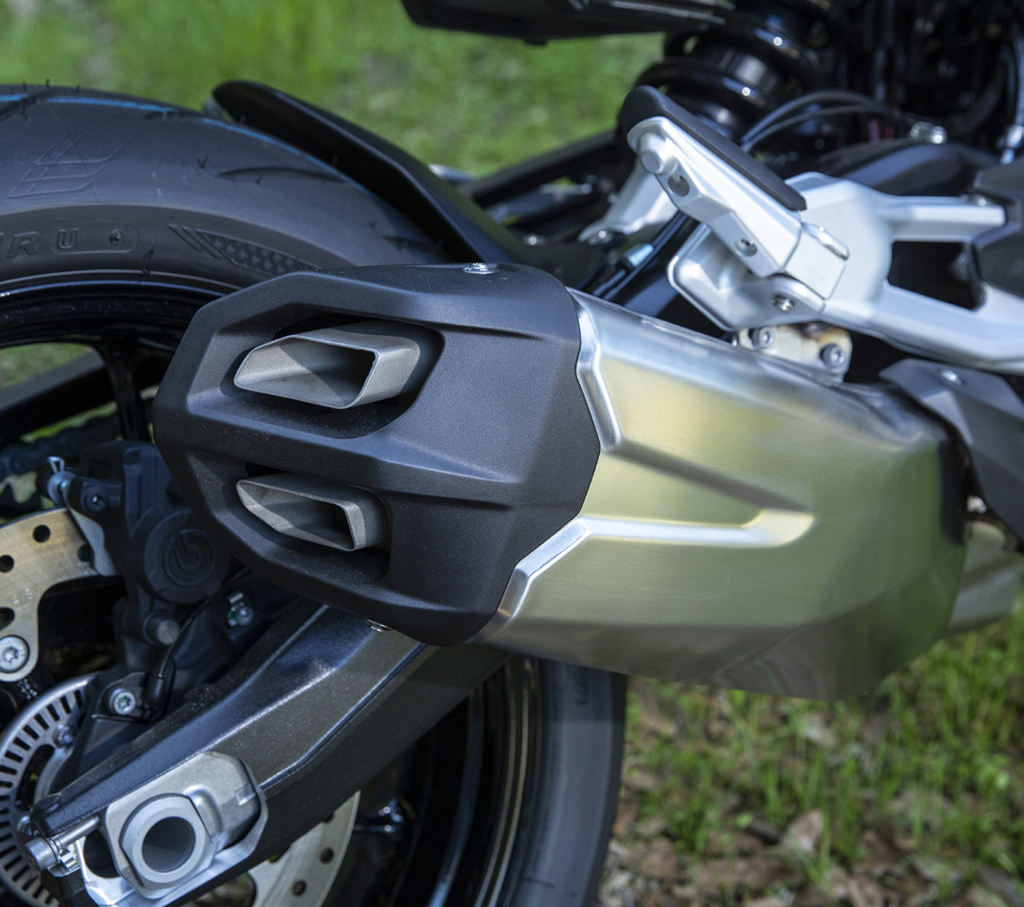
New models rarely disappoint these days. Extreme competition between manufacturers results in continuous and impressive improvements to products offered to motorcyclists, who are nothing less than pampered in today’s market. It would be interesting to question the BMW F900R’s project leaders concerning their decisions. During the technical presentation, it was regularly mentioned that BMW wants to attract millennials to the brand, particularly so with the F900R. According to the German brand, the key elements to reach that goal are modern equipment, connectivity features, easy rideability brought by a low seat and light weight, and an appealing price. Could it be that BMW pushed the concept too far? That would be too bad as right now, the lack of decent suspension and a good seat are the only characteristics preventing the F900R from being an excellent and affordable ($10,345) midsize naked.
As for the XR, which costs around 20% more ($12,800), it clearly is the easiest of the two to live with on a day-to-day basis, even if its suspension is also tuned somewhat surprisingly since the unusually long travel doesn’t generate any benefit in terms of comfort. It doesn’t make it a bad motorcycle at all. Rather, the F900XR is simply a nice and rare midsize crossover with a sporty nature.
